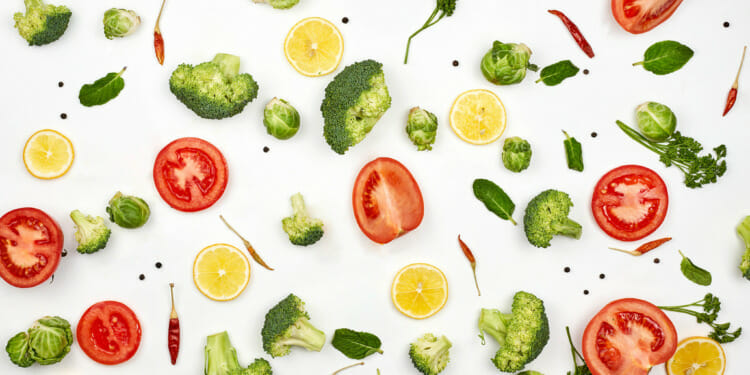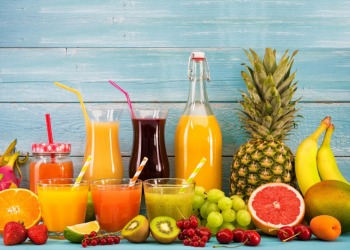Finding yourself with food that is about to go bad, or has already gone bad, is a universal experience. For those who are exceptionally averse to seeing food go to waste, below are some ideas about what to do with food that is about to go bad, or has already gone bad. These ideas can also be useful in pandemic times when one needs to lockdown and avoid going shopping too often.
Living a more sustainable lifestyle means trying to use your items as best you can to avoid throwing things away or wasting them. Food waste is a big source of waste and when it ends up in landfills it can create more greenhouse gasses when it mixes with other waste.
Fruits:
When fruits start to go bad, look to make sure there aren’t any visible signs of mold or rot. If there are, that is your sign to put it in the compost, or if compost is not accessible to you, throw it out.
Here are some ways you can use near-end-but-still-tasty fruit:
Popsicles – popsicles can be a yummy summertime treat, or a great snack after a workout or as part of your breakfast;
Dry it out – using a dehydrator, or your oven, dehydrated fruit is the perfect way to prevent waste and to ensure you have a snack for the future;
Smoothie– you can throw anything into a smoothie, which makes it a great option if you have a variety of fruits that you need to use up;
Add to water or ice cubes – make any drink more refreshing by adding fruit! You can also slice up fruit into smaller pieces, add them to an ice tray and cover them with water. This will allow you to create a fruit infused drink to enjoy in the future;
Smoothie chunks – If you have an entire mango you aren’t going to use before it goes bad, slice it up and put it in a freezer safe bag; this way you will be able to add it to a smoothie, or put it on a cold dessert like ice cream;
Decorative uses for citrus – Put citrus inside of a turkey or chicken or thinly sliced with salmon;
Cleaning uses for citrus – Use citrus to clean grill grates by cutting them in half and adding some salt; lemon can also be used for a variety of household purposes;
Crumbles or bakes– you can even roast the fruits themselves as a topping for ice cream or for baked goods.
Jam- if you have a lot of a specific type fruit, perhaps you had a bountiful harvest from your backyard apple tree or you picked too many strawberries, jam can be an ideal way to enjoy fruits throughout the year and you can share with friends and family;
For browning bananas- put them in the fridge to keep the insides perfectly good; alternatively, let your bananas brown and make some banana bread; you can also use the peels to clean the leaves of plants and you can cut them up and place them around plants in the garden for a natural aphid repellent.
Veggies:
Like with fruits, make sure you check for visible signs of mold or rot before consuming.
Blanching leafy greens is a great way to use them after they begin to wilt. You can add them to stir fry, pasta, and add some sauces and seasonings and it can be its own side dish. The video below walks you through how to blanch.
Here’s a rundown of what you can do:
Stock – Stocks are great if you need to use your veggies, but don’t have the time for an involved cooking because you can always throw in whatever you have and walk away from the pot;
Limp celery – Soak it in cold water to rehydrate if it it has become limp in the refrigerator;
Sauces – Tomatoes are a great choice for sauces, but if you have other vegetables instead, you can still make a great sauce to put over rice or a dish of your choice; in this respect, mushrooms provide excellent sauces and chopped onions, carrots and celery are the necessary starting base of countless sauces and stews; you can also can your sauce so it will last for months or years;
Puree – Purees are great if you have vegetables that are on their way out, or if you have frozen veggies you want to use up; it’s advisable to boil them (in a little salt water) before putting them through the blender;
Casserole – Veggie casseroles are a versatile dish that you can throw any vegetable into;
Chips – Veggie chips are another easy recipie you can make if you have root vegetables; Having a mandolin will make the process a lot easier, but you can still slice by hand (using a big knife) to make these chips;
Pickle them – Pickling vegetables is a great way to preserve your veggies;
Freeze for stocks – like with fruit, you can slice up vegetables and freeze them for a future use in stock or soup.
Freeze greens for smoothies – If you want to add some greens to your smoothies, freezing greens like spinach or kale is an option if they are on their last legs and you don’t want to waste them;
Juice your veggies – If you have access to a juicer you can make juice and drink it immediately, or freeze it in cubes to defrost at your own pace;
Frozen meals – If you are really desperate to get rid of some veggies, and have time on your hands, you can cook them up using your favorite recipe and freeze them for a day when you don’t have time or energy to cook.
The video below includes more ideas that can help you use food and reduce waste.
Other Food:
Bread or grains – If they have gone stale you can spritz them with water and put them in a toaster oven or toaster; some people find that wrapping them in foil helps them regain softness. You can also turn stale bread into croutons or breadcrumbs; you can make Tuscan “fettunta” or what the Romans call “bruschetta”: toast the old bread slices and while still warm, rub them with garlic and sprinkle good olive oil over them; or you can make what the French call “pain perdu” (“lost” bread): soak in a little milk mixed with a beaten egg and quickly fry in butter, eat with honey or whatever jam you like;
Meat and fish – Do not eat or use meat or other animal products that have gone bad; if you have meat that you don’t think you will have time to use you can cut it up and store it in the freezer or make stocks; before it goes bad you can also “insure” it (an old French trick): Quickly roll your meat all over in a frying pan so the surface is colored (no pink showing anywhere) but don’t finish cooking: You can then place it in your refrigerator and it will keep until the next day (but no more);
Freeze herbs – Either do it on their own or in ice cubes with oil, then you can use the pre-seasoned cube when you need it!
For more info on how long food keeps after the date on the label has passed, check out this article.
For a list of recipes check out this link.
Ultimately planning ahead will help you reduce food waste more than anything. This however takes time, energy and sometimes more money than people have when they are grocery shopping. If you know you won’t be able to eat all your food before it goes bad, share with friends or family.
Editor’s Note: The opinions expressed here by Impakter.com columnists are their own, not those of Impakter.com. — In the Featured Photo: Featured Photo Credit: Marco Verch Professional Photographer via Flickr










